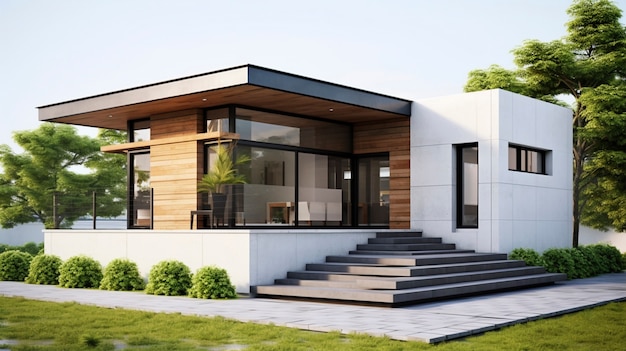Landscape design is a blend of art and science, requiring creativity, planning, and an understanding of fundamental principles. Whether you’re a novice gardener or a seasoned landscaper, mastering the basics of landscape design is essential for creating outdoor spaces that are beautiful, functional, and sustainable. Here’s a guide to help you get started:
1. Understand Your Site
Before you begin designing your landscape, take the time to assess your site and understand its unique characteristics. Consider factors such as:
- Climate: Determine your climate zone, including temperature, rainfall, and frost dates, to select plants that will thrive in your area.
- Sunlight: Observe the patterns of sunlight and shade throughout the day to determine the best locations for planting and outdoor living areas.
- Soil: Test your soil to assess its pH, texture, and drainage characteristics, which will influence plant selection and garden design.
- Topography: Take note of any slopes, grades, or natural features that may impact drainage, erosion, or the layout of your landscape.
2. Establish Goals and Priorities
Identify your goals and priorities for your backyard designers to guide the design process. Consider how you want to use the space, whether it’s for entertaining, gardening, relaxation, or recreation. Determine which features are most important to you, whether it’s a lush garden, a functional outdoor kitchen, or a serene water feature. Establishing clear goals will help you make informed decisions and create a cohesive design that meets your needs and preferences.
3. Design with Functionality in Mind
Design your landscape to be both beautiful and functional, providing spaces for a variety of activities and accommodating the needs of the users. Consider how you will move through and use the space, and design pathways, seating areas, and outdoor living spaces accordingly. Pay attention to traffic flow, views, and privacy when arranging different areas within the landscape. Design outdoor spaces that are comfortable, accessible, and inviting for both residents and guests.
4. Use the Principles of Design
Familiarize yourself with the principles of design that govern all successful landscapes:
- Unity and Harmony: Create a cohesive and harmonious design by repeating patterns, colors, and materials throughout the landscape.
- Balance: Achieve visual balance by distributing elements evenly throughout the space, whether it’s symmetrical or asymmetrical.
- Proportion and Scale: Ensure that the size and scale of plants and hardscape elements are proportionate to the size of the space, avoiding overcrowding or overwhelming.
- Rhythm and Movement: Use lines, shapes, and patterns to create a sense of rhythm and movement, guiding the eye through the landscape.
- Focal Points: Create focal points to draw the eye and add interest to the landscape, whether it’s a specimen tree, a sculpture, or a water feature.
5. Select Plants Wisely
Choose plants that are well-suited to your site conditions, climate, and maintenance capabilities. Consider factors such as:
- Native Plants: Select native plants whenever possible, as they are adapted to the local climate and require less water, fertilizer, and maintenance.
- Diversity: Incorporate a variety of plants, including trees, shrubs, perennials, and annuals, to create interest and biodiversity in the landscape.
- Seasonal Interest: Choose plants that provide interest in every season, whether it’s through flowers, foliage, bark, or berries.
- Maintenance: Consider the maintenance requirements of each plant, including water, pruning, and pest control, and choose plants that fit your level of commitment.
6. Incorporate Hardscape Elements
Hardscape elements such as pathways, patios, walls, and structures provide structure and organization to the landscape. Integrate hardscape elements into your design to define outdoor rooms, create focal points, and enhance functionality. Choose materials that complement your home’s architecture and the surrounding environment, and consider factors such as durability, maintenance, and cost when selecting hardscape materials.
7. Pay Attention to Detail
Attention to detail is key to creating a successful landscape design. Consider the texture, color, and form of plants and materials, and how they will interact with each other and the surrounding environment. Pay attention to transitions between different areas of the landscape, and use elements such as pathways, borders, and plantings to create cohesion and flow. Take the time to fine-tune the details of your design to achieve a polished and cohesive look.
8. Experiment and Learn
Landscape design is a creative process that requires experimentation and learning. Don’t be afraid to try new plants, materials, and design ideas, and be open to feedback from nature and from others. Take the time to observe and learn from successful landscapes in your area, and incorporate lessons learned into your own designs. Remember that landscape design is both an art and a science, and that mastering the basics takes time, practice, and patience.
By mastering the basics of landscape design and applying these principles to your own outdoor space, you can create a beautiful and functional landscape that enhances the beauty of your surroundings and improves your quality of life. Whether you’re starting from scratch or renovating an existing landscape, thoughtful planning, attention to detail, and a creative spirit will set you on the path to success.





Leave a Reply